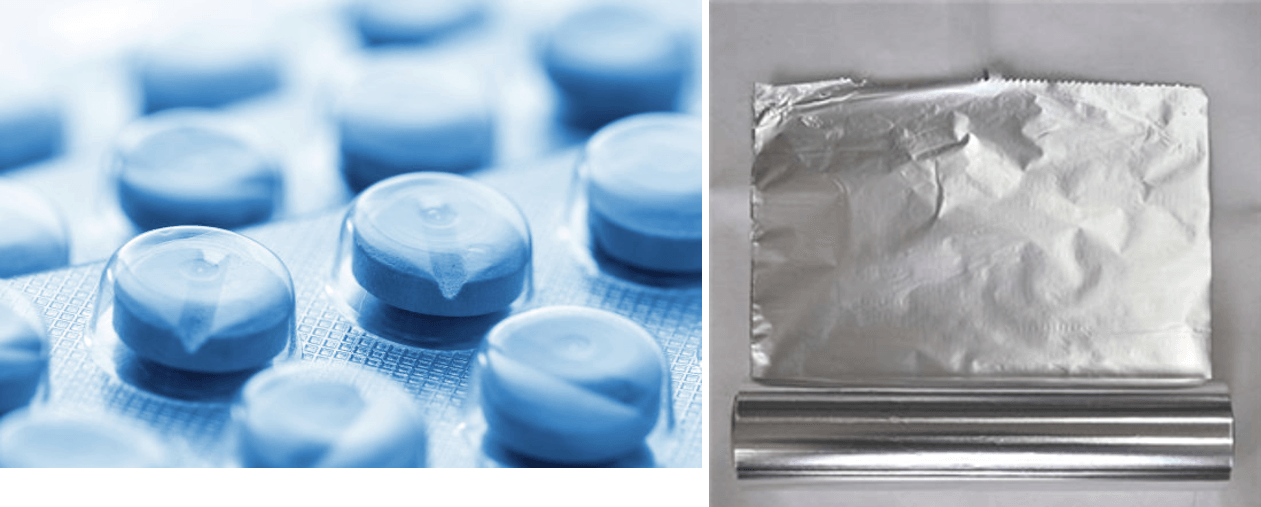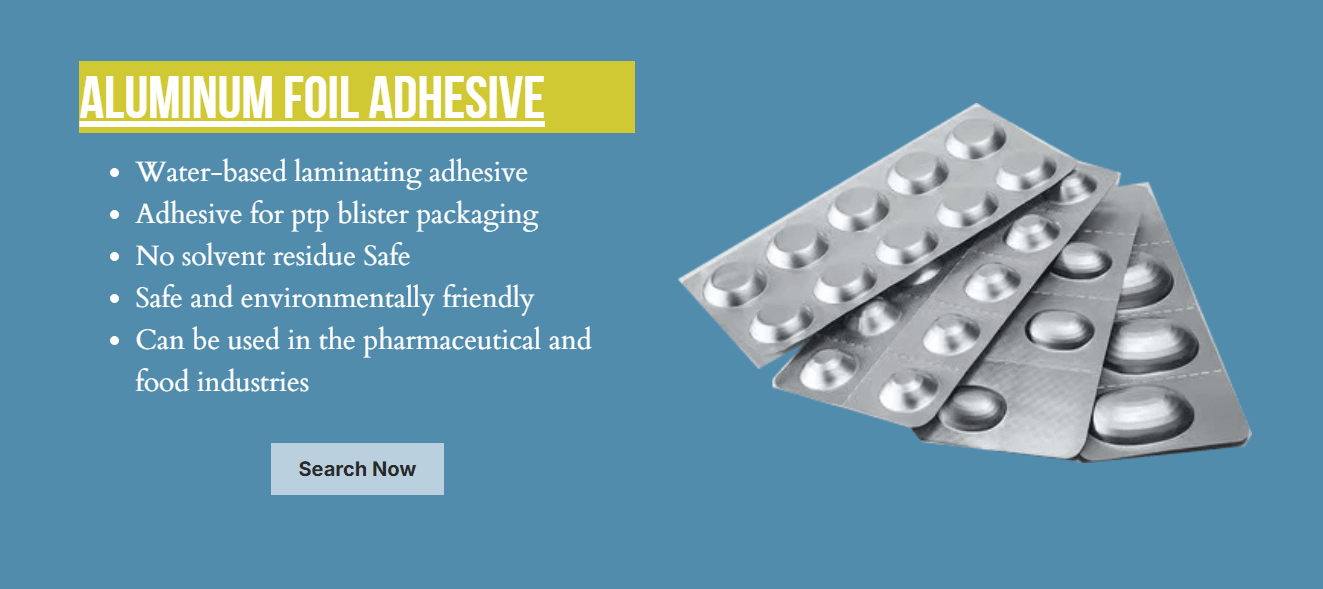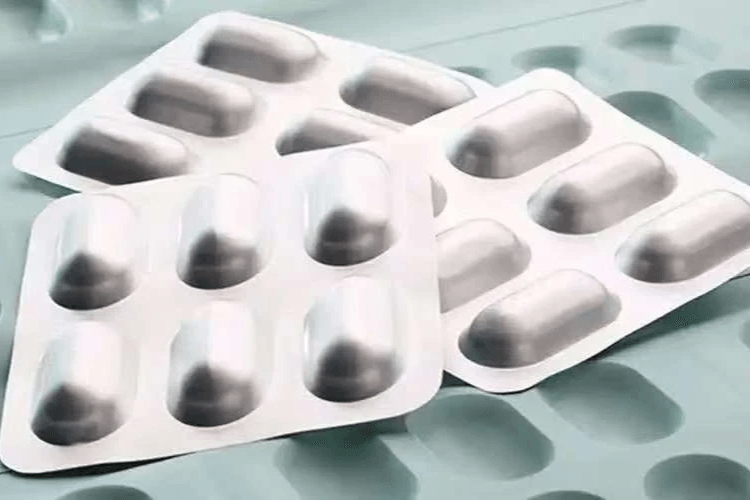Introduction

In the world of packaging, heat seal adhesives play a pivotal role in ensuring products remain secure and fresh. Heat seal coating is a specialized technique that utilizes heat to bond materials together, making it essential for various applications, particularly in food packaging. This innovative bonding method not only enhances product integrity but also contributes to the overall efficiency of packaging processes.
Overview of Heat Seal Adhesives
Heat seal glue is designed to create strong bonds between different materials, often involving films and foils used in packaging. This adhesive technology operates by applying heat and pressure to activate the glue, resulting in a durable seal that can withstand various conditions. Whether it's heat seal vinyl for craft projects or industrial applications, these adhesives are crucial for maintaining product quality and safety.
Importance of Heat Seal Coating
The significance of heat seal coating cannot be overstated; it ensures that packages remain airtight and moisture-resistant, which is vital for food preservation. In an industry where freshness is paramount, effective heat seal bonding prevents contamination and spoilage, extending shelf life significantly. Moreover, with the increasing demand for sustainable packaging solutions, manufacturers are turning to advanced heat seal technologies that align with eco-friendly practices.
Applications in Food Packaging
Heat seal food packaging is ubiquitous in supermarkets and restaurants alike, from snack bags to vacuum-sealed meals. This method not only keeps food safe but also plays a critical role in branding through visually appealing designs on packages made possible by high-quality coatings. As consumers become more health-conscious and environmentally aware, the reliance on effective heat sealing techniques continues to grow across the food industry.
Understanding Heat Seal Adhesives

Heat seal adhesives are the unsung heroes of packaging, especially when it comes to ensuring everything from snacks to medical supplies stays fresh and secure. These specialized glues are designed to create strong bonds when heat is applied, making them essential in various industries. Whether it's heat seal food packaging or heat seal vinyl applications, understanding the different types of heat seal glue can help you make informed choices for your specific needs.
Types of Heat Seal Glue
When diving into the world of heat seal adhesives, you'll encounter several types tailored for different applications. The most common types include thermoplastic adhesives, which become pliable upon heating and solidify upon cooling, creating a robust bond ideal for heat seal food packaging. Additionally, there are pressure-sensitive adhesives that work well in applications requiring flexibility and quick bonding without the need for high temperatures—perfect for projects involving heat seal vinyl materials.
Another notable category is solvent-based glues that offer excellent adhesion properties but may require careful handling due to their volatile components. Each type of heat seal glue has its unique advantages depending on your application; selecting the right one can significantly enhance your product's performance and longevity.
Properties and Benefits
Heat seal adhesives boast a range of properties that make them indispensable across various sectors. One significant benefit is their ability to create hermetic seals that protect against moisture and contaminants—crucial for food safety in heat seal food packaging applications. Moreover, these glues exhibit excellent thermal stability and resistance to chemicals, ensuring they maintain their integrity even under challenging conditions.
The bonding strength offered by these adhesives cannot be overlooked either; they provide durable connections that withstand stress during transport or handling. Additionally, many modern formulations are designed with eco-friendliness in mind, allowing manufacturers to meet sustainability goals while still achieving high-performance results with factory glue solutions.
Common Applications in Industries
Heat seal bonding plays a critical role across numerous industries beyond just food packaging. In the textile industry, for instance, heat seal coatings are utilized to bond fabrics together seamlessly without visible stitching—ideal for creating sleek designs in clothing or upholstery projects. Similarly, electronics manufacturers rely on these adhesives for assembling components where traditional fastening methods may not suffice due to space constraints or material compatibility issues.
Packaging companies also leverage heat seal glue extensively when producing pouches or bags designed for retail products ranging from pet treats to pharmaceuticals. This versatility highlights how integral these adhesives have become in maintaining product quality while enhancing aesthetic appeal—a win-win situation across various markets!
The Role of Heat Seal Coating

Heat seal coating plays a pivotal role in ensuring the integrity and reliability of packaging materials, especially in food applications. This specialized coating creates a strong bond when heat is applied, allowing for effective sealing without compromising the contents inside. By using heat seal glue, manufacturers can achieve a secure closure that enhances product freshness and safety.
How Heat Seal Coating Works
Heat seal coating operates on the principle of thermoplastic bonding, where heat melts the adhesive layer to create a durable seal between two surfaces. When applied to materials like plastic or aluminum films, this process ensures that the layers fuse together effectively under controlled temperatures and pressures. The result is a robust bond that resists moisture and contaminants, making it ideal for heat seal food packaging.
The magic of heat seal bonding lies in its simplicity; just apply heat, and voilà! You’ve got yourself an airtight package ready for distribution. This method not only streamlines production processes but also minimizes waste, as precise amounts of factory glue are used to achieve optimal results.
Advantages for Aluminum Films
Aluminum films benefit significantly from heat seal coatings due to their lightweight yet sturdy nature. The application of heat seal glue on these films enhances their barrier properties against light, moisture, and oxygen—key factors that can compromise food quality over time. Additionally, the smooth surface created by the coating allows for easier printing and labeling without affecting adhesion.
Another advantage is that aluminum films treated with heat seal coatings are often more cost-effective than other packaging methods. They provide excellent protection while requiring less material overall compared to traditional rigid containers. This efficiency makes them a favorite choice in industries looking to balance sustainability with functionality.
Applications Beyond Food Packaging
While heat seal coatings are predominantly associated with food packaging, their versatility extends far beyond culinary uses. Industries such as pharmaceuticals utilize these coatings for blister packs that require airtight seals to maintain product efficacy and shelf life. Similarly, consumer goods packaging often employs heat seal bonding techniques to ensure products remain intact during shipping and handling.
Moreover, the use of heat seal vinyl has gained traction in various sectors due to its durability and aesthetic appeal—think custom graphics or branding elements seamlessly integrated into packages! As innovation continues in this field, we can expect even broader applications across different markets where secure sealing is paramount.
Selecting Heat Seal Glue for Your Needs

Choosing the right heat seal glue is crucial for achieving optimal results in heat seal bonding, especially when it comes to applications like heat seal food packaging and heat seal vinyl. With a plethora of options available, understanding the specific needs of your project can help you navigate this sticky situation. Factors such as material compatibility, temperature resistance, and application method will significantly influence your decision.
Factors to Consider
When selecting heat seal glue, first consider the type of materials you’ll be working with. Different adhesives perform better on various substrates; for instance, some glues are specifically formulated for aluminum films used in food packaging while others excel with vinyl surfaces. Additionally, think about the environmental conditions your product will face—temperature fluctuations or exposure to moisture can dictate whether you need a more robust adhesive or a flexible one.
Another key factor is the bonding strength required for your application. If you're dealing with heavy-duty items that demand strong adhesion under stress, you'll want to opt for factory glue designed for high-performance tasks. On the flip side, if you're sealing lightweight materials in heat seal food packaging, a less aggressive adhesive might suffice.
Lastly, don’t overlook safety and compliance standards associated with your chosen adhesive. In industries like food packaging where regulations are stringent, ensuring that your heat seal coating meets health and safety guidelines is paramount to avoid any potential hazards.
Popular Brands and Products
The market offers several reputable brands known for their effective heat seal glues tailored to different applications. For example, 3M has a range of industrial adhesives that are highly regarded in both food packaging and vinyl applications due to their reliability and versatility in various temperatures. Similarly, DuPont’s line of adhesives includes options specifically designed for aluminum films used in heat seal coating processes.
For those seeking eco-friendly alternatives without sacrificing performance, Chemix provides water-based resin solutions that cater to environmentally conscious manufacturers while still delivering excellent bond strength suitable for multiple applications including heat seal food packaging. Another notable mention is Henkel's Loctite brand which features specialized products aimed at enhancing sealing efficiency across diverse industries.
By exploring these brands and their offerings closely aligned with your needs—whether it be durability or eco-friendliness—you can confidently select an adhesive that fits perfectly into your production process.
Case Studies in Effective Use
To illustrate the effectiveness of different types of heat seal glue in real-world scenarios, consider a case study involving a leading snack manufacturer utilizing advanced heat seal coating techniques on their product packaging. By switching from traditional adhesives to a high-performance factory glue designed explicitly for aluminum foil pouches, they achieved not only improved shelf life but also enhanced product freshness—a win-win situation!
In another instance within the cosmetics industry, a company faced challenges with its plastic containers sealing effectively using standard adhesives during production runs involving intricate designs made from vinyl materials. By opting for specialized heat seal bonding solutions tailored specifically to their unique needs—alongside rigorous testing—they successfully minimized production errors while maximizing visual appeal through clean seals.
These case studies highlight how strategic choices regarding adhesives can lead directly to operational improvements and customer satisfaction—proof that selecting the right heat seal glue isn’t just about sticking things together; it's about elevating quality across every aspect of production!
Innovations in Heat Seal Technology

The landscape of heat seal technology is evolving rapidly, driven by the need for more efficient and sustainable solutions. As industries increasingly prioritize eco-friendliness and performance, innovations in heat seal coating and bonding are at the forefront. This section explores some of the latest advancements, including Chemix's water-based resin solution, eco-friendly alternatives in adhesives, and emerging trends that promise to shape the future of heat seal applications.
Chemix's Water-Based Resin Solution
Chemix has made significant strides with its water-based resin solution designed specifically for heat seal glue applications. This innovative approach not only enhances the bond strength but also minimizes environmental impact by reducing volatile organic compounds (VOCs). As a result, Chemix’s solution is ideal for heat seal food packaging and other applications where safety and sustainability are paramount.
The versatility of this water-based resin extends beyond traditional uses; it can also be applied to materials like heat seal vinyl, making it a favorite among manufacturers seeking reliable adhesion without compromising on environmental standards. With its excellent performance characteristics, this factory glue offers an effective alternative to solvent-based adhesives while ensuring compliance with health regulations. The growing popularity of Chemix’s product highlights a shift toward more responsible manufacturing practices within the industry.
Eco-Friendly Alternatives in Adhesives
As consumers become increasingly conscious of their environmental footprint, manufacturers are responding by developing eco-friendly alternatives to traditional adhesives used in heat seal bonding. These sustainable options often utilize bio-based materials or recycled components that reduce reliance on petroleum-derived substances commonly found in conventional glues. By incorporating these green solutions into their processes, companies can enhance their brand image while contributing positively to environmental conservation.
Moreover, eco-friendly adhesives do not compromise on performance; they provide strong bonds necessary for effective heat seal food packaging as well as various industrial applications. The transition towards these alternatives signifies a broader trend within the adhesive market that prioritizes sustainability without sacrificing quality or efficiency. As manufacturers continue to innovate in this space, we can expect even more advanced formulations that meet both ecological demands and industry standards.
Future Trends in Heat Seal Bonding
Looking ahead, several trends are poised to shape the future of heat seal bonding technologies significantly. One notable direction is the integration of smart technologies into adhesive formulations—think temperature-sensitive glues that adjust their properties based on external conditions or even self-healing adhesives capable of repairing minor damages autonomously! Such innovations could revolutionize how we think about durability and longevity in packaging solutions.
Additionally, advancements in automation will likely streamline production processes involving heat seal coating applications across various sectors—from food packaging lines to consumer goods manufacturing facilities utilizing heat seal vinyl products extensively. The focus will be on enhancing efficiency while maintaining high-quality standards through precision engineering techniques that minimize waste and improve overall productivity.
In conclusion, staying abreast of these innovations is crucial for businesses looking to leverage cutting-edge solutions for their adhesive needs effectively.
Troubleshooting Common Heat Seal Issues

When it comes to heat seal bonding, not all is smooth sailing. Many factors can lead to issues that compromise the integrity of your heat seal coating, especially in applications like heat seal food packaging and heat seal vinyl products. Understanding these common problems is the first step toward ensuring a successful sealing process.
Identifying Common Problems
Several issues can arise during the heat sealing process that may affect the performance of your heat seal glue. One prevalent problem is inadequate sealing, which often results from insufficient temperature or pressure during application; this can lead to weak seals that fail under stress. Additionally, contamination on the surfaces being bonded—such as oils or dust—can prevent proper adhesion and should be monitored closely.
Another issue frequently encountered is overheating, which can cause melting or distortion of materials, particularly with thinner films used in food packaging. If you notice discoloration or bubbling in your heat seal coating, it’s likely a sign of excessive heat application. Lastly, inconsistent bond strength across different areas of a package might indicate uneven pressure distribution during sealing.
Solutions for Optimal Bonding
To achieve optimal bonding with your heat seal glue, start by ensuring that you calibrate your equipment correctly for temperature and pressure settings specific to the materials being used. Regular maintenance checks on machines are essential; keeping them clean and well-functioning minimizes contamination risks and enhances performance in factory glue applications. Additionally, conducting test seals before full production runs can help identify potential issues early on.
If you encounter weak seals due to inadequate bonding, consider adjusting the dwell time—the duration during which pressure and heat are applied—to ensure thorough adhesion throughout the surface area. For those dealing with overheating issues, lowering the temperature slightly while increasing dwell time may yield better results without compromising material integrity. Always consult material specifications to find optimal settings tailored for both food packaging and vinyl applications.
Tips for Effective Heat Seal Processes
For effective heat sealing processes, preparation is key! Start by thoroughly cleaning surfaces before applying any heat seal coating; this simple step can dramatically improve adhesion quality by removing contaminants that hinder bonding effectiveness. Additionally, maintaining consistent environmental conditions—like humidity and temperature—can further enhance the performance of your adhesives.
Utilizing high-quality factory glue specifically designed for your application will also make a significant difference; investing in reliable products pays off in durability and efficiency over time. Don’t forget about training staff on best practices! Educating team members about proper handling techniques ensures everyone understands how crucial their role is in achieving consistent results across all operations involving heat seal food packaging or other uses.
Conclusion
In wrapping up our exploration of heat seal solutions, it’s clear that the advantages of heat seal coating and heat seal glue extend far beyond mere convenience. These innovations play a crucial role in ensuring product integrity, especially in the realm of heat seal food packaging, where freshness and safety are paramount. By understanding how to maximize these benefits, businesses can enhance their packaging processes and elevate customer satisfaction.
Maximizing the Benefits of Heat Seal Solutions
To truly harness the power of heat seal bonding, companies must first familiarize themselves with various types of heat seal glue available on the market. Selecting the right adhesive can significantly improve efficiency and reduce waste during production, particularly when dealing with materials like heat seal vinyl. Additionally, investing in high-quality factory glue ensures that products remain sealed securely throughout their journey from production to consumer.
Choosing the Right Products for Your Needs
For instance, if you’re focused on heat seal food packaging, look for adhesives specifically designed to maintain food safety standards while providing a strong bond. By carefully evaluating your options and consulting case studies demonstrating effective use of various heat seal solutions, you can make informed decisions that align with your operational goals.
Future Directions in Heat Seal Technology
The future of heat seal technology is bright and filled with exciting innovations poised to reshape industries. With advancements like Chemix's water-based resin solution leading the charge toward eco-friendly alternatives in adhesives, we may soon see a shift towards more sustainable practices across manufacturing sectors. As trends evolve—such as an increased focus on recyclable materials—companies will need to adapt their strategies around heat seal coating to stay competitive while meeting environmental standards.
